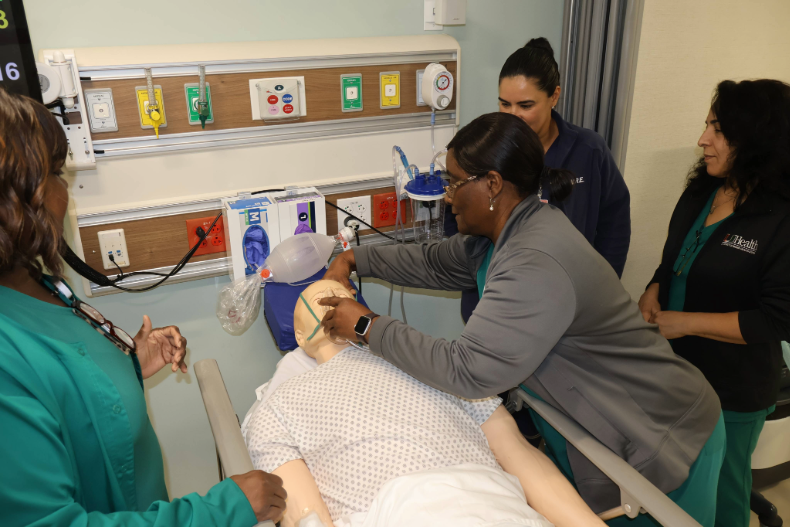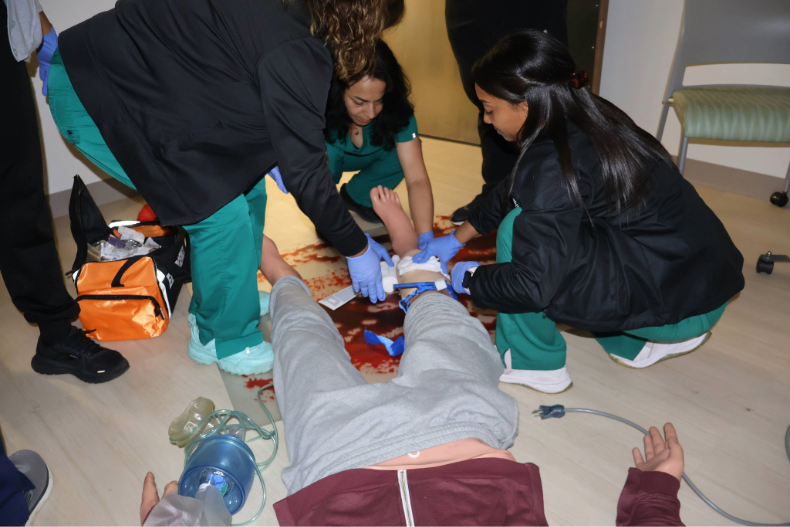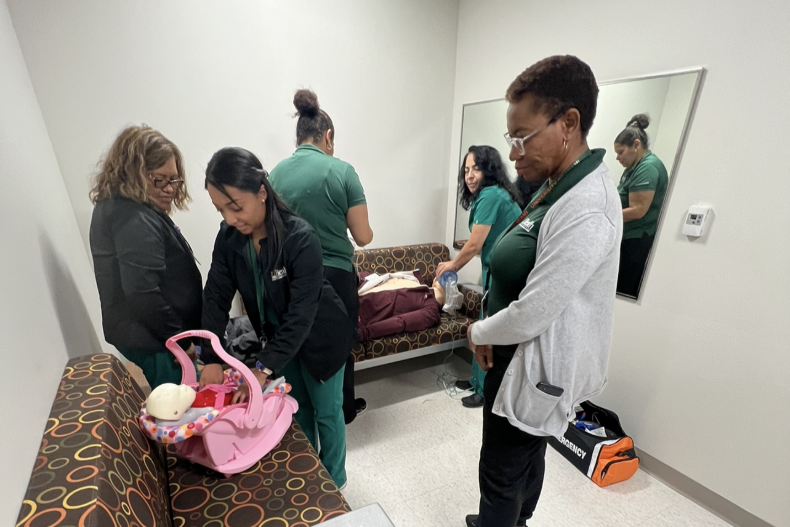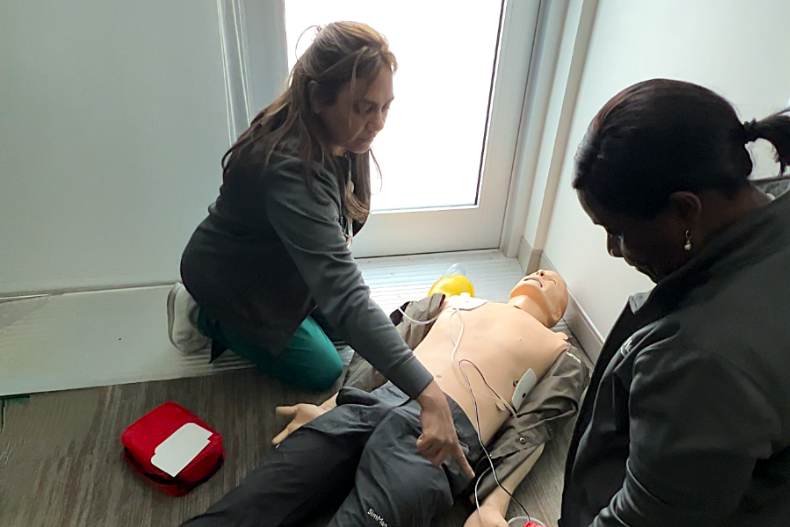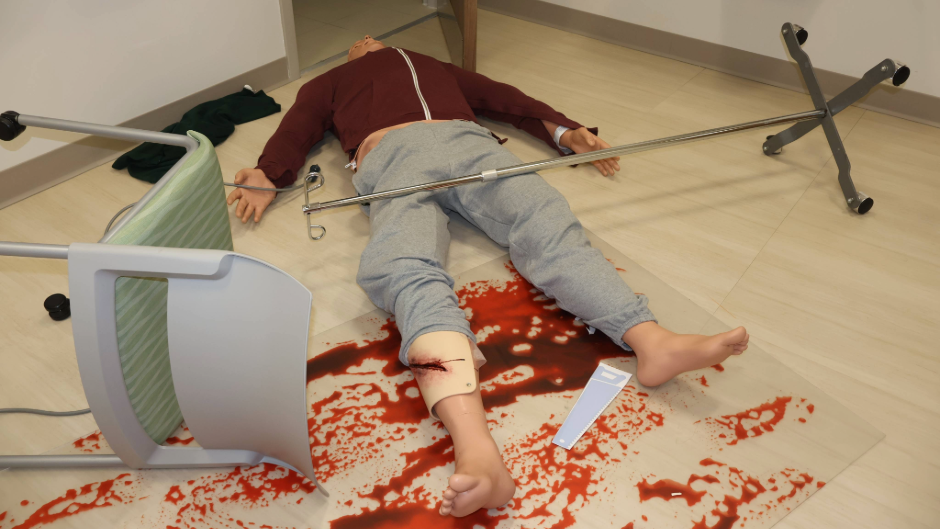School shootings make headlines, but many other emergencies are more common among South Florida’s more than half a million public school students. These include behavioral emergencies, diabetic crises, asthma flareups, seizures, allergic reactions, accidental poisonings, physical injuries, fainting, choking, overdose, and more.
When emergencies happen in school settings, school-based health providers are often first to act. That’s why five years ago, Jeffrey Groom, Ph.D., CRNA, simulation educator for the Simulation Hospital Advancing Research and Education (S.H.A.R.E.®), began offering a simulation-based emergency course geared toward these professionals. “The Next 5 Minutes - After Calling 9-1-1™” is a half-day training to address what to do (and not do) before emergency transport arrives.
“I developed this course in collaboration with Dr. Lisa Gwynn, a well-known, respected community health services and pediatrics leader from the University of Miami Miller School of Medicine who serves as the program’s medical director,” said Dr. Groom. “The course is offered as part of back-to-school preparations that take place each August.”
This year’s course, which took place on August 12 at S.H.A.R.E., was completed by nine employees of the University of Miami School Health and Pediatric Mobile Clinic Programs who provide health services in Miami-Dade Public Schools. In addition to classroom discussion and a detailed workbook, participants went through demonstration and practice sessions, as well as four simulated emergencies. With each scenario, Groom reinforced the importance of checking the area for safety concerns, assessing the situation and patient, and calling 9-1-1 as soon as possible.
“The hands-on training we had to do was great,” said participant Micheline Jean, a licensed practical nurse (LPN) who has worked as a school nurse for over 10 years. She especially appreciated the scenario in which she had to administer Narcan to an unresponsive “parent” suspected of a drug overdose and then locate one of his missing “children” who had become frightened. The “child” was a toddler-size simulator instructors had tucked away in a nearby bathroom.
“School nurses primarily serve school students, but as the only health care professional on site they are often called into action to aid teachers, staff, or even visitors in an emergency until EMS help arrives,” said Groom.
In another scenario, life-size video projections and booming audio simulated a severe thunderstorm. Participants gathered around a simulator who, they were informed, had likely been struck by lightning. As the team worked to administer CPR, Amauri Quintana, D.N.P., APRN, a S.H.A.R.E. graduate simulation educator, peppered them with questions. “How long has he been down?” he asked. “What can we report to emergency services?”
In a third scenario, the team was called to a closet in which a worker was “bleeding” profusely. Michelle Arrojo, D.N.P., APRN, another graduate simulation educator, coaxed the responders to quickly search for clues. “Is the victim responsive?” she added. “Does he have any allergies?” She also reminded them to document as much as possible to ensure a solid hand-off report to emergency personnel.
“I like the fact that they have different scenarios,” said Alexis Hernandez, a medical assistant. Hernandez, who works in an elementary school, said she encountered a couple of real-life emergencies this year—a child with new-onset seizures who passed out in her clinic and a student who dislocated her kneecap in a cartwheel incident. “Her patella ended up on the other side of her leg,” she explained.
After an intense four hours at S.H.A.R.E., Hernandez, Jean, and their peers had reviewed medical response planning, basic lifesaving (BLS) and automated external defibrillator (AED) techniques, CPR, bag-mask ventilation, tourniquet application, and choking response skills. They also had mastered a useful mnemonic device: “Drs. ABCD,” which stands for Dangers, Responsive, Send 9-1-1, Airway, Breathing, Circulation, and Defibrillation.
For Hernandez, the training was relevant, even if she never encounters these exact same emergencies practiced. “It shows us where to apply a tourniquet, how to control severe bleeding, how we would treat certain cases,” she explained. “The focus on medications was particularly helpful for me, as well, and addressed things I need to know.”
For more information regarding this or other trainings, please contact Zuzer Calero, executive director, S.H.A.R.E. Business Operations, at 305-284-2709 or via email at SHARE@miami.edu.”
